5 Impressive Camouflaging Insects
5 Impressive Camouflaging Insects
Camouflage and Concealment
For prey and hunters alike, there are many reasons to try to blend in and conceal themselves within their environment. Aggressive mimicry involves a predator, parasite, etc. utilizing their deception to catch victims, while defensive mimicry involves the concealment of oneself in order to avoid detection from predators. There are several different types of camouflage within these umbrella categories that are commonly practiced by both animals and insects:
Background Camouflage:
These creatures attempt to disappear by flawlessly blending with their surroundings.
Plant Mimicry:
These creatures appear to be specific flowers or branches of a plant.
Predator Mimicry:
This is often used by creatures that are prey and is used to scare and deter predators by appearing to be bigger or to be a different creature that is itself predatory.
Prey Mimicry:
This is often used by predators to lure in prey. Some of the best examples of this are aquatic creatures like the angler fish that uses its glowing appendage to attract unsuspecting fish.
Transparency:
These insects are rarer and utilize their transparent limbs, wings, or body to help try to blend in with their surroundings.
Dressed to Kill
The Orchid Mantis (Hymenopus coronatus) – Plant Mimicry
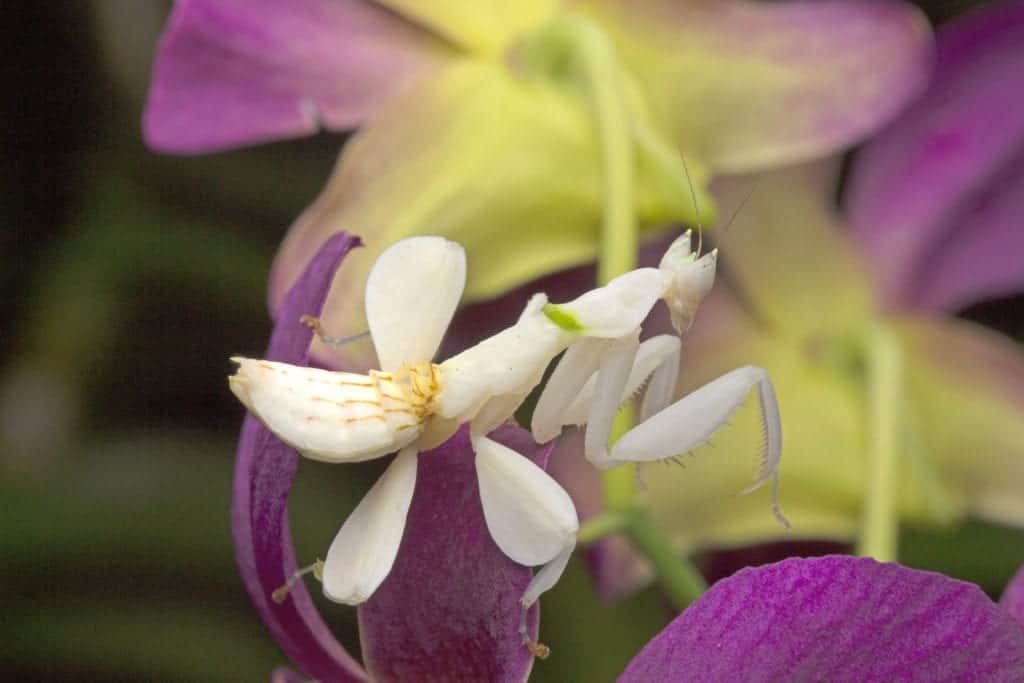
The Two For One Special
The Owl Butterfly (Caligo) – Predator Mimicry
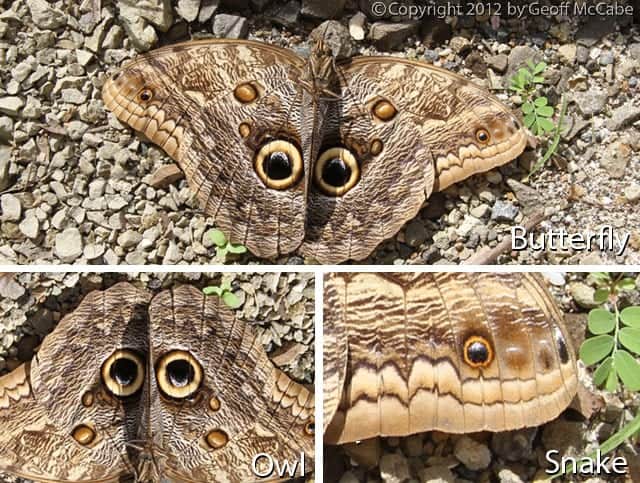 The Owl Butterfly has a highly impressive superpower as it is able to mimic not one, but TWO different predators. From one angle, its wings display a set of large eyes and feather-like textures, appearing to be an owl. Simultaneously, another portion of its wings simulate the appearance of scales and looks like the profile of a snake with an eye and nostril facing the observer.
The Owl Butterfly has a highly impressive superpower as it is able to mimic not one, but TWO different predators. From one angle, its wings display a set of large eyes and feather-like textures, appearing to be an owl. Simultaneously, another portion of its wings simulate the appearance of scales and looks like the profile of a snake with an eye and nostril facing the observer.
Dead as a Leaf
The Dead Leaf Mantis (deroplatys desiccata) – Plant Mimicry
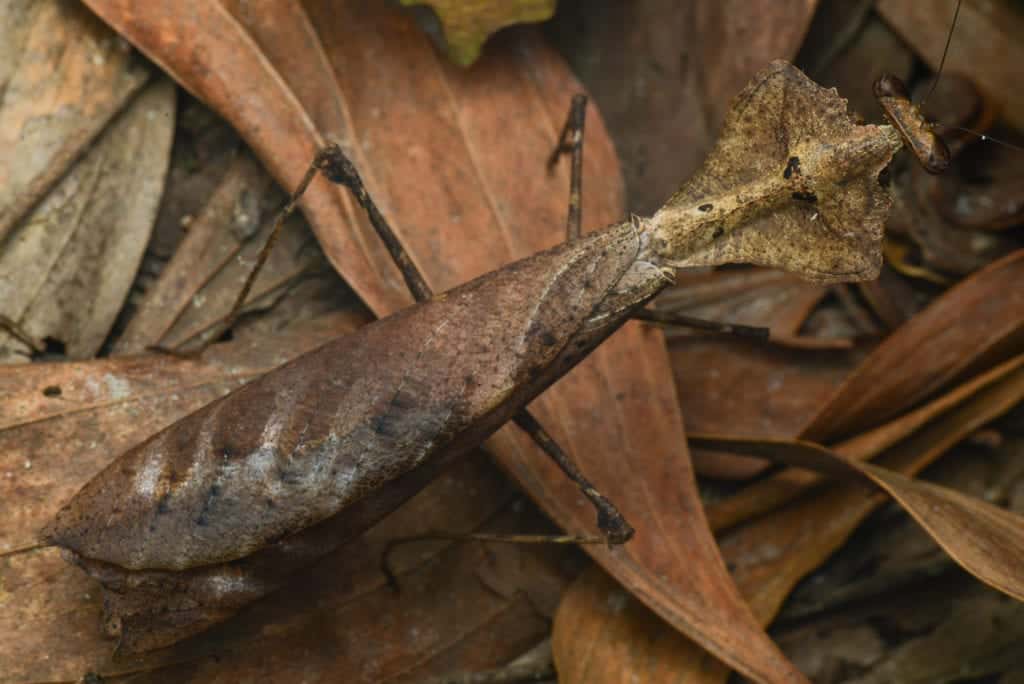 Similar to their cousins the orchid mantis, these mantises also blend in with nearby foliage. However, instead of attracting its prey with the vibrant colors of a flower, these insects get by through the use of a completely negligible appearance, resembling a dead leaf.
Similar to their cousins the orchid mantis, these mantises also blend in with nearby foliage. However, instead of attracting its prey with the vibrant colors of a flower, these insects get by through the use of a completely negligible appearance, resembling a dead leaf.
Sneaky Sand-dwellers
The Sand Grasshopper (Spharagemon collare) – Background Camouflage
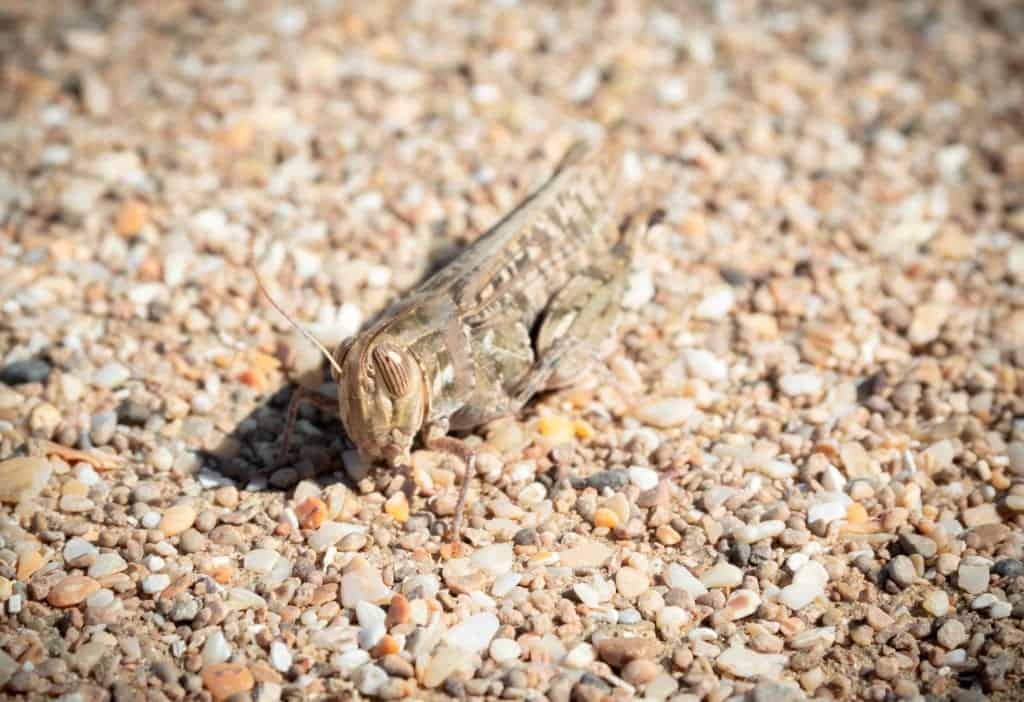 Perhaps the name of this insect should actually be the “Sandhopper” due to it living in the sand as opposed to grass. But no matter what you call them, you may struggle to ever see one unless it is hopping away from you due to its incredible ability to blend into its surroundings.
Perhaps the name of this insect should actually be the “Sandhopper” due to it living in the sand as opposed to grass. But no matter what you call them, you may struggle to ever see one unless it is hopping away from you due to its incredible ability to blend into its surroundings.
A Sharp Shield
The Thorn Bug (Umbonia crassicornis) – Plant Mimicry
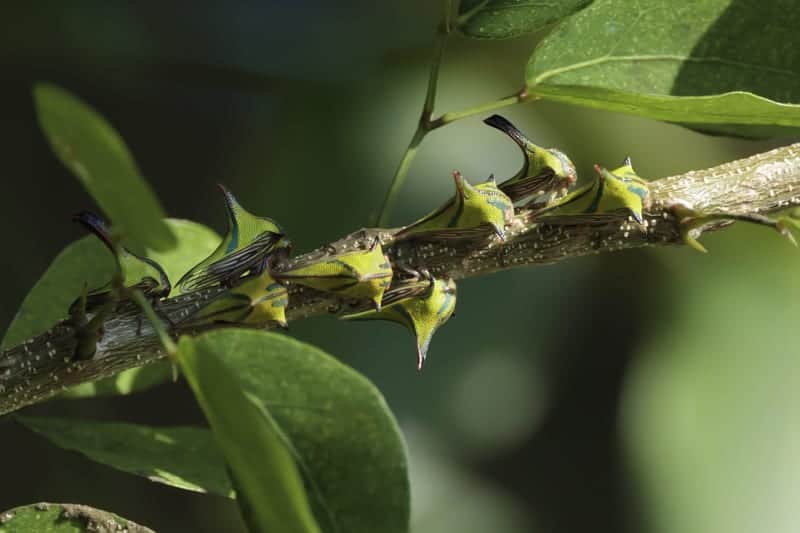
Image – Copyright 2018 Alan Vernon
These tricky little insects appear to simply be thorns on branches. This ends up being somewhat of a double-edged sword because not only do they blend into the plants, but the concept of thorns is a secondary deterrent for any potential predators. This example of mimicry also acts a sort of symbiotic relationship as the presence of the thorn bugs helps protect the plant from predators as well.
Citations
5 Cool Examples of Insect Mimicry (2018) Sunny Sports. Available at: https://www.sunnysports.com/blog/5-cool-examples-insect-mimicry/ (Accessed: July 2020). Keartes, S. (2017) Why Do These Deadly Insects Look Like Flowers?, YouTube. It’s Okay To Be Smart. Available at: https://www.youtube.com/watch?v=x7SAecAIeMI (Accessed: July 2020). McCabe, G. (2012) Camouflage Insects – Remarkable Bugs that Hide in Plain Sight , Montezuma Beach – Costa Rica. Available at: http://www.montezumabeach.com/camouflage-insects/ (Accessed: July 2020). Mead, F. and Fasulo, T. (2014) Thorn Bug – Umbonia crassicornis , Entomology Department of the University of Florida. Florida Department of Agriculture and Consumer Services. Available at: http://entnemdept.ufl.edu/creatures/orn/thorn_bug.htm (Accessed: July 2020). Nelson , B. (2020) 11 Amazing Examples of Insect Camouflage, Treehugger. Available at: https://www.treehugger.com/amazing-examples-of-insect-camouflage-4869256 (Accessed: July 2020).
Request a Free Quote Today
(We do not share your data with anybody, and only use it for its intended purpose)


